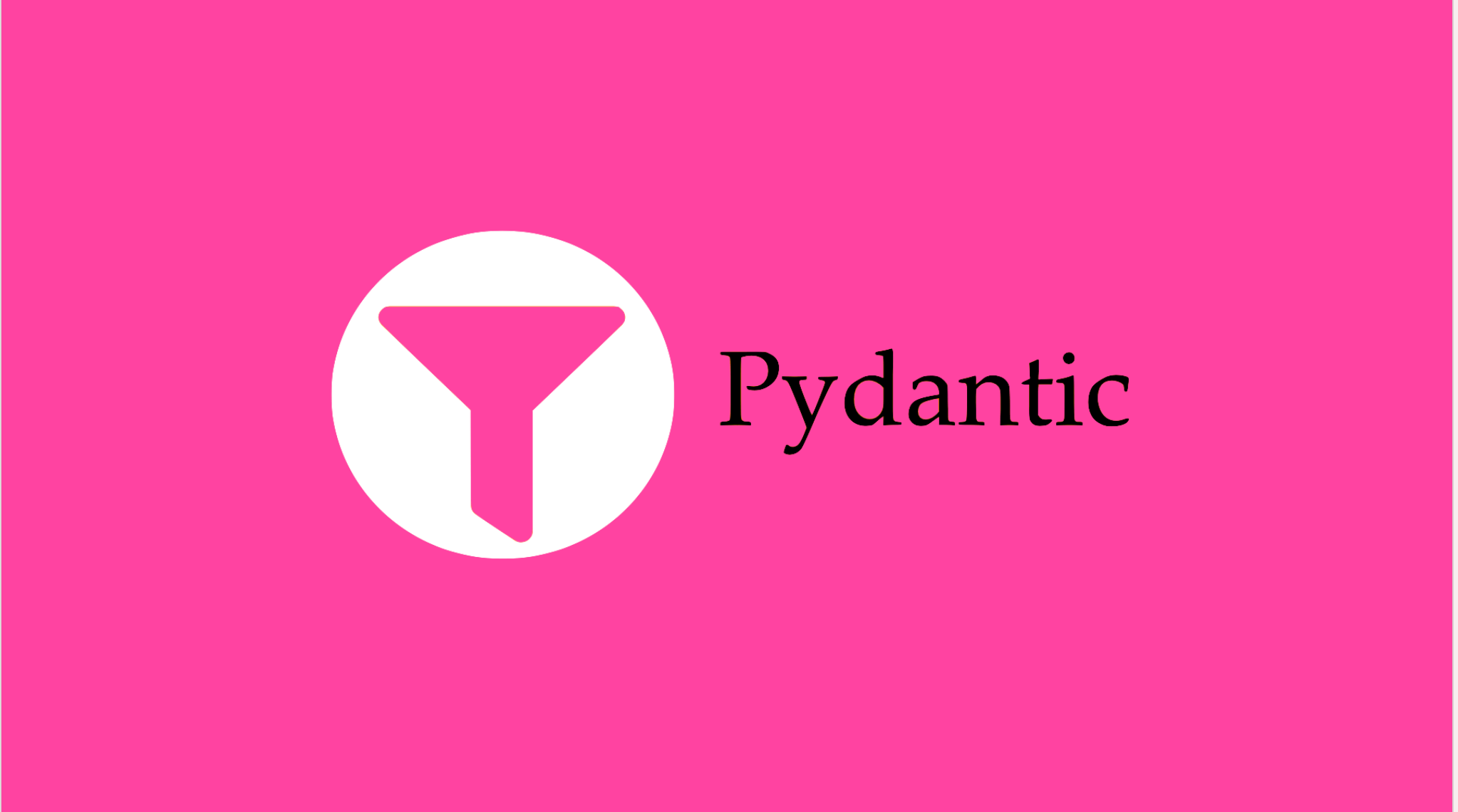Pydantic 是一个使用Python类型注解进行数据验证和管理的模块。安装方法非常简单,打开终端输入:
pip install pydantic
它类似于 Django DRF 序列化器的数据校验功能,不同的是,Django里的序列化器的Field是有限制的,如果你想要使用自己的Field还需要继承并重写它的基类:
# Django 序列化器
class Book(models.Model):
id = models.AutoField(primary_key=True)
name = models.CharField(max_length=32)
price = models.DecimalField(max_digits=5, decimal_places=2)
author = models.CharField(max_length=32)
publish = models.CharField(max_length=32)而 Pydantic 基于Python3.7以上的类型注解特性,实现了可以对任何类做数据校验的功能:
# Pydantic 数据校验功能
from datetime import datetime
from typing import List, Optional
from pydantic import BaseModel
class User(BaseModel):
id: int
name = 'John Doe'
signup_ts: Optional[datetime] = None
friends: List[int] = []
external_data = {
'id': '123',
'signup_ts': '2019-06-01 12:22',
'friends': [1, 2, '3'],
}
user = User(**external_data)
print(user.id)
print(type(user.id))
#> 123
#> <class 'int'>
print(repr(user.signup_ts))
#> datetime.datetime(2019, 6, 1, 12, 22)
print(user.friends)
#> [1, 2, 3]
print(user.dict())
"""
{
'id': 123,
'signup_ts': datetime.datetime(2019, 6, 1, 12, 22),
'friends': [1, 2, 3],
'name': 'John Doe',
}
"""从上面的基本使用可以看到,它甚至能自动帮你做数据类型的转换,比如代码中的 user.id, 在字典中是字符串,但经过Pydantic校验器后,它自动变成了int型,因为User类里的注解就是int型。
当我们的数据和定义的注解类型不一致时会报这样的Error:
from datetime import datetime
from typing import List, Optional
from pydantic import BaseModel
class User(BaseModel):
id: int
name = 'John Doe'
signup_ts: Optional[datetime] = None
friends: List[int] = []
external_data = {
'id': '123',
'signup_ts': '2019-06-01 12:222',
'friends': [1, 2, '3'],
}
user = User(**external_data)
"""
Traceback (most recent call last):
File "1.py", line 18, in <module>
user = User(**external_data)
File "pydantic\main.py", line 331, in pydantic.main.BaseModel.__init__
pydantic.error_wrappers.ValidationError: 1 validation error for User
signup_ts
invalid datetime format (type=value_error.datetime)
"""即 “invalid datetime format”, 因为我传入的 signup_ts 不是标准的时间格式(多了个2)。
1.Pydantic 模型数据导出
通过Pydantic模型中自带的 json 属性方法,能让经过校验后的数据一行命令直接转成 json 字符串,如前文中的user对象:
print(user.dict()) # 转为字典
"""
{
'id': 123,
'signup_ts': datetime.datetime(2019, 6, 1, 12, 22),
'friends': [1, 2, 3],
'name': 'John Doe',
}
"""
print(user.json()) # 转为json
"""
{"id": 123, "signup_ts": "2019-06-01T12:22:00", "friends": [1, 2, 3], "name": "John Doe"}
"""非常方便。它还支持将整个数据结构导出为 schema json,它能完整地描述整个对象的数据结构类型:
print(user.schema_json(indent=2))
"""
{
"title": "User",
"type": "object",
"properties": {
"id": {
"title": "Id",
"type": "integer"
},
"signup_ts": {
"title": "Signup Ts",
"type": "string",
"format": "date-time"
},
"friends": {
"title": "Friends",
"default": [],
"type": "array",
"items": {
"type": "integer"
}
},
"name": {
"title": "Name",
"default": "John Doe",
"type": "string"
}
},
"required": [
"id"
]
}
"""2.数据导入
除了直接定义数据校验模型,它还能通过ORM、字符串、文件导入到数据校验模型:
比如字符串(raw):
from datetime import datetime
from pydantic import BaseModel
class User(BaseModel):
id: int
name = 'John Doe'
signup_ts: datetime = None
m = User.parse_raw('{"id": 123, "name": "James"}')
print(m)
#> id=123 signup_ts=None name='James'此外,它能直接将ORM的对象输入,转为Pydantic的对象,比如从Sqlalchemy ORM:
from typing import List
from sqlalchemy import Column, Integer, String
from sqlalchemy.dialects.postgresql import ARRAY
from sqlalchemy.ext.declarative import declarative_base
from pydantic import BaseModel, constr
Base = declarative_base()
class CompanyOrm(Base):
__tablename__ = 'companies'
id = Column(Integer, primary_key=True, nullable=False)
public_key = Column(String(20), index=True, nullable=False, unique=True)
name = Column(String(63), unique=True)
domains = Column(ARRAY(String(255)))
class CompanyModel(BaseModel):
id: int
public_key: constr(max_length=20)
name: constr(max_length=63)
domains: List[constr(max_length=255)]
class Config:
orm_mode = True
co_orm = CompanyOrm(
id=123,
public_key='foobar',
name='Testing',
domains=['example.com', 'foobar.com'],
)
print(co_orm)
#> <models_orm_mode.CompanyOrm object at 0x7f0bdac44850>
co_model = CompanyModel.from_orm(co_orm)
print(co_model)
#> id=123 public_key='foobar' name='Testing' domains=['example.com',
#> 'foobar.com']从Json文件导入:
from datetime import datetime
from pathlib import Path
from pydantic import BaseModel
class User(BaseModel):
id: int
name = 'John Doe'
signup_ts: datetime = None
path = Path('data.json')
path.write_text('{"id": 123, "name": "James"}')
m = User.parse_file(path)
print(m)从pickle导入:
import pickle
from datetime import datetime
from pydantic import BaseModel
pickle_data = pickle.dumps({
'id': 123,
'name': 'James',
'signup_ts': datetime(2017, 7, 14)
})
m = User.parse_raw(
pickle_data, content_type='application/pickle', allow_pickle=True
)
print(m)
#> id=123 signup_ts=datetime.datetime(2017, 7, 14, 0, 0) name='James'3.自定义数据校验
你还能给它增加 validator 装饰器,增加你需要的校验逻辑:
from pydantic import BaseModel, ValidationError, validator
class UserModel(BaseModel):
name: str
username: str
password1: str
password2: str
@validator('name')
def name_must_contain_space(cls, v):
if ' ' not in v:
raise ValueError('must contain a space')
return v.title()
@validator('password2')
def passwords_match(cls, v, values, **kwargs):
if 'password1' in values and v != values['password1']:
raise ValueError('passwords do not match')
return v
@validator('username')
def username_alphanumeric(cls, v):
assert v.isalnum(), 'must be alphanumeric'
return v上面,我们增加了三种自定义校验逻辑:
1.name 必须带有空格
2.password2 必须和 password1 相同
3.username 必须为字母
让我们试试这三个校验是否成功实现:
user = UserModel(
name='samuel colvin',
username='scolvin',
password1='zxcvbn',
password2='zxcvbn',
)
print(user)
#> name='Samuel Colvin' username='scolvin' password1='zxcvbn' password2='zxcvbn'
try:
UserModel(
name='samuel',
username='scolvin',
password1='zxcvbn',
password2='zxcvbn2',
)
except ValidationError as e:
print(e)
"""
2 validation errors for UserModel
name
must contain a space (type=value_error)
password2
passwords do not match (type=value_error)
"""可以看到,第一个UserModel里的数据完全没有问题,通过校验。
第二个UserModel里的数据,由于name存在空格,password2和password1不一致,无法通过校验。
4.性能表现
这是最令我惊讶的部分,Pydantic 比 Django-rest-framework 还快了12.3倍:
| Package | Version | Relative Performance | Mean validation time |
|---|---|---|---|
| pydantic | 1.7.3 | 93.7μs | |
| attrs + cattrs | 20.3.0 | 1.5x slower | 143.6μs |
| valideer | 0.4.2 | 1.9x slower | 175.9μs |
| marshmallow | 3.10.0 | 2.4x slower | 227.6μs |
| voluptuous | 0.12.1 | 2.7x slower | 257.5μs |
| trafaret | 2.1.0 | 3.2x slower | 296.7μs |
| schematics | 2.1.0 | 10.2x slower | 955.5μs |
| django-rest-framework | 3.12.2 | 12.3x slower | 1148.4μs |
| cerberus | 1.3.2 | 25.9x slower | 2427.6μs |
而且他们的所有基准测试代码都是开源的,你可以在下面这个Github链接找到:
https://github.com/samuelcolvin/pydantic/tree/master/benchmarks
如果你的网络无法访问GitHub,请关注Python实用宝典公众号后台回复Pydantic获取。
我们的文章到此就结束啦,如果你喜欢今天的 Python 教程,请持续关注Python实用宝典。
有任何问题,可以在公众号后台回复:加群,回答相应验证信息,进入互助群询问。
原创不易,希望你能在下面点个赞和在看支持我继续创作,谢谢!
Python实用宝典 ( pythondict.com )
不只是一个宝典
欢迎关注公众号:Python实用宝典
